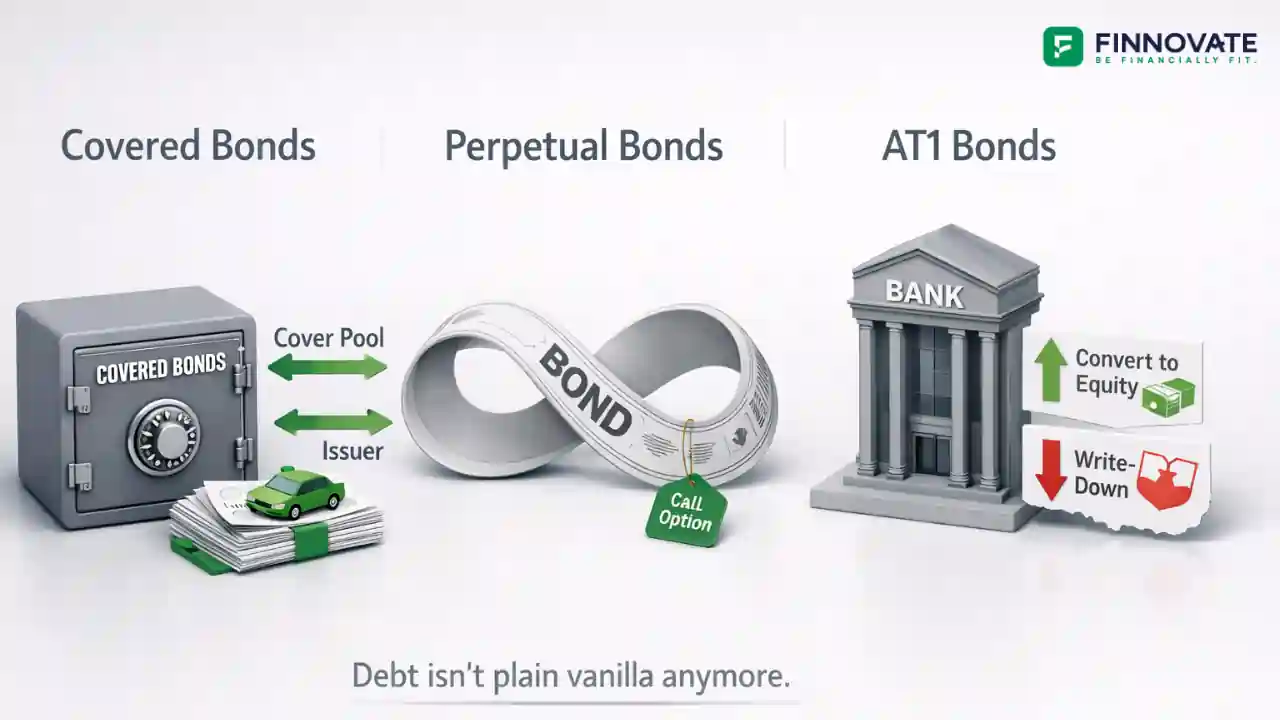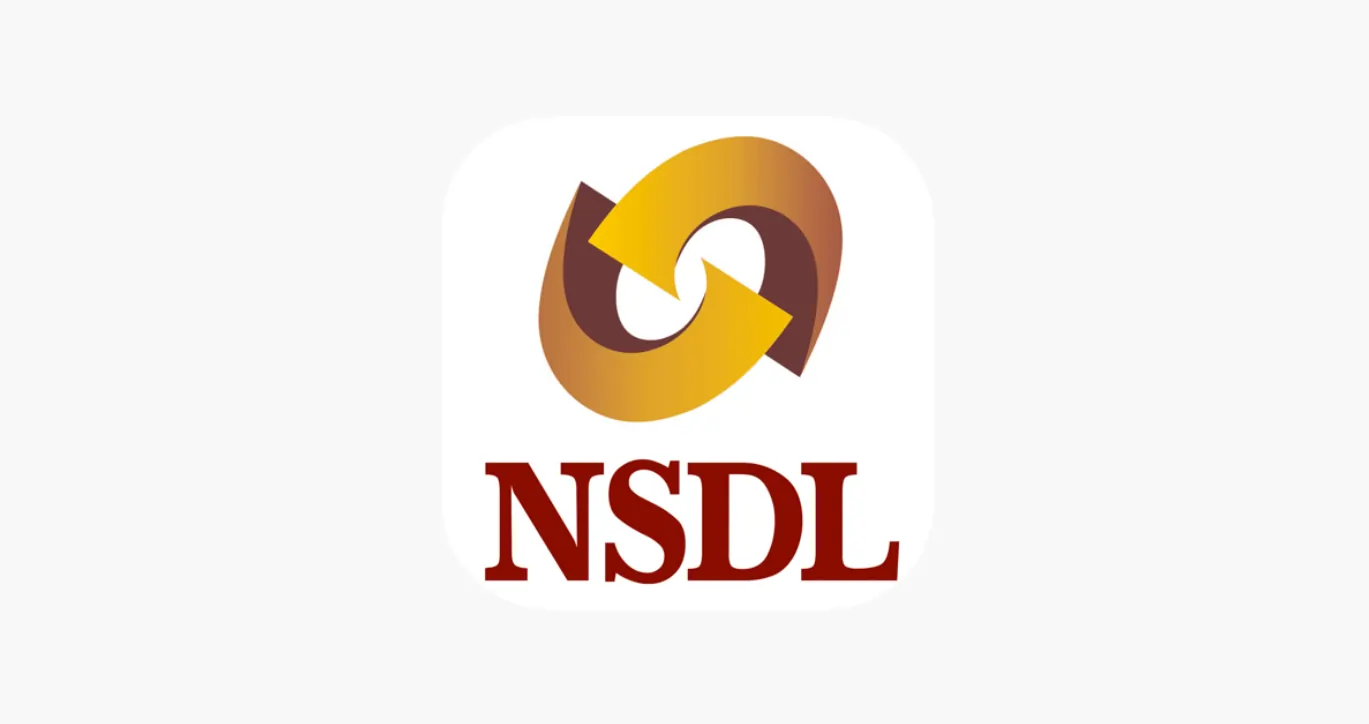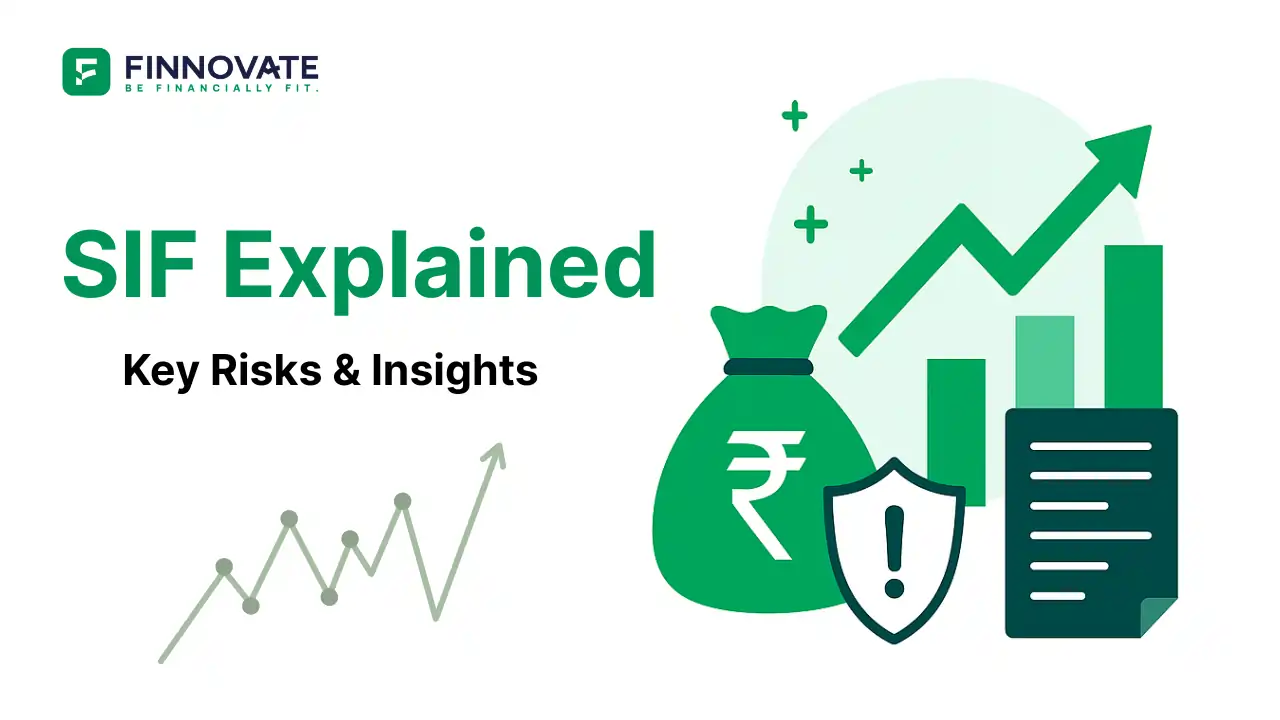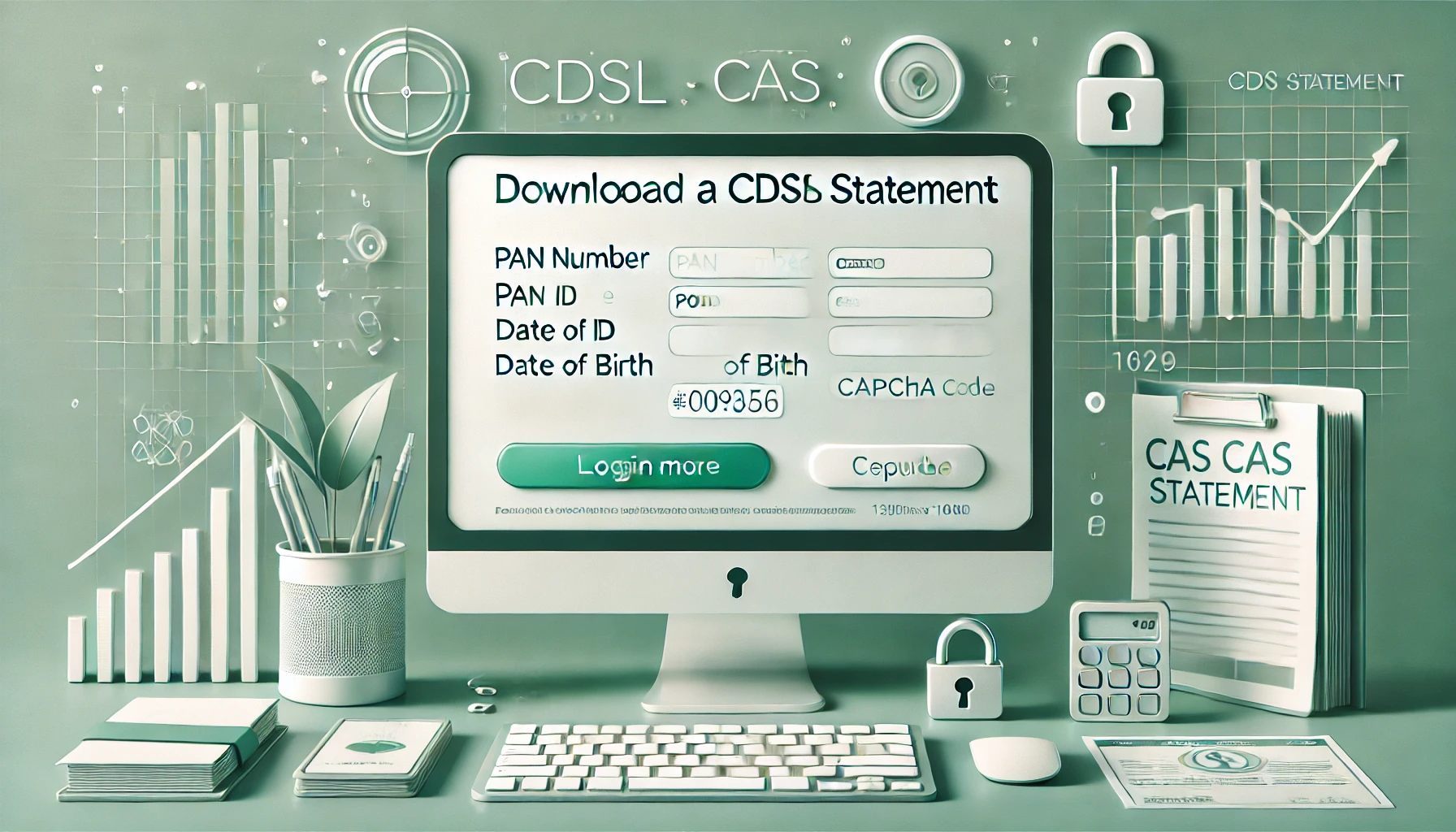
Covered Bonds vs Perpetual vs AT1 Bonds Explained
Covered bonds, perpetual bonds, and AT1 bonds look similar but behave very differently. Le...
Two friends earn the same amount every month.
By mid-month, one is short on cash while the other has already invested and still manages weekend plans.
The difference isn’t luck - it’s financial fitness.
It’s how well you manage your money, not how much you earn.
Just like your body needs regular check-ups, your finances do too. The FinnFit Financial Fitness Test by Finnovate helps you measure how strong your money foundation really is - across six essential pillars of financial well-being.
And because everyone’s financial journey is different, FinnFit offers dedicated versions for different life stages, giving you insights tailored to where you are today.
Being financially fit isn’t about having crores in your bank account.
It’s about confidence - knowing that your money can handle both dreams and detours.
A financially fit person can pay bills comfortably, face emergencies without panic, and invest regularly toward meaningful goals.
It’s a calm assurance that your finances support your life, not the other way around.
Every FinnFit report measures your score across six key areas that shape your overall financial health. Each one plays a role, and neglecting even one can throw the others off balance.
Life is full of surprises - and not all are pleasant. A sudden illness, job loss, or accident can shake your stability overnight.
Risk management ensures you can recover from such shocks without derailing your long-term plans.
Start by keeping an emergency fund that covers at least 3–6 months of living expenses.
Equally important is insurance - health cover for hospital costs and term cover to secure your family’s future.
These aren’t expenses; they’re safety nets. Without them, even small financial hits can feel catastrophic.
Financial fitness starts with clarity - knowing where your money goes and making sure it goes where it should.
Budgeting isn’t about cutting corners; it’s about assigning purpose to every rupee.
A simple framework like the 50/30/20 rule can work wonders - 50% for needs, 30% for wants, and 20% for savings or investments.
Combine that discipline with smart tax planning - spreading investments across the year, maximizing deductions, and avoiding last-minute rushes.
When budgeting and taxation flow in harmony, your finances start running on autopilot.
Loans help us progress - homes, cars, education - but unmanaged debt can silently drain future freedom.
A good benchmark is the Debt-to-Income Ratio (DTI) - your total EMIs divided by your monthly income.
Keep this under 35% to stay healthy.
Between 36–40% is a caution zone; above 40% is a stress signal.
If you’re nearing those limits, focus on paying off high-interest debts first.
Remember, smart borrowing builds assets. Reckless borrowing builds anxiety.
A plan without goals is like running without direction.
Financially fit people know what they’re saving for - and why.
Start by listing your goals by time frame: short-term (next few years), medium-term (5–10 years), and long-term (retirement or financial independence).
Once the purpose is clear, you can assign SIPs, insurance, or other investments to each goal.
When every rupee saved has a reason, motivation naturally follows.
Saving money is good. Growing it is better.
Relying only on Fixed Deposits may feel safe, but it can’t outpace inflation in the long run.
A well-designed investment plan balances safety, liquidity, and growth - using a healthy mix of:
The goal isn’t to chase quick gains, but to build wealth steadily and sensibly.
Consistency beats timing - every single time.
This is the most overlooked pillar - yet one of the most important.
You’ve built wealth over the years; estate planning ensures it reaches the right hands, smoothly and without disputes.
That means keeping your Will updated, adding nominees to all accounts, and ensuring key documents are accessible to family.
Financial fitness isn’t complete until your family is secure, informed, and empowered to act - even in your absence.
Your priorities change as life evolves.
In your early working years, you focus on saving, investing, and building a safety net.
Later, the focus shifts to protecting wealth, generating income, and managing legacy.
The FinnFit Test recognizes these transitions, offering personalized evaluations for every life stage.
It adjusts its questions and scoring to match your journey - whether you’re just getting started or consolidating decades of effort - so that your report reflects what truly matters for you today.
Even disciplined savers fall into these traps:
Awareness is the first step. Acting on it is what builds true financial fitness.
You track your health, your steps, and even your calories but when was the last time you checked your financial health?
The FinnFit Financial Fitness Test gives you a score across all six pillars, highlights where you stand, and suggests what to fix.
It’s quick, practical, and tailored to your life stage.
Take the FinnFit Test Now - it’s free, takes under three minutes, and could change the way you view your money.
Financial fitness isn’t about perfection - it’s about awareness and action.
You can’t control the economy, but you can control how prepared you are.
Just like a health report keeps your body in check, your FinnFit Score keeps your money on track.
Take your check-up today - and see how financially fit you truly are.
It’s a structured way to measure your financial stability and progress across six critical areas - from budgeting and loans to investments and estate planning.
At least 3–6 months of essential expenses; if you’re self-employed or have dependents, aim for 9–12 months.
Stay within 35% of your take-home income. Beyond 40%, debt starts restricting flexibility.
Yes - it’s a proven method to balance lifestyle and discipline. Adjust as your income or goals change.
A good starting point is 10–15 times your annual income, customized to your loans and family needs.
They’re safe but may not beat inflation. Combine them with equity or hybrid funds for long-term wealth creation.
It’s a personalized financial fitness check-up built on six proven pillars, designed for different life stages - giving you a score and clear next steps to strengthen your finances.
Disclaimer: This article is for educational purposes only and should not be construed as financial advice. The FinnFit Test and its results are meant to help you understand your financial habits and awareness levels. For personalised recommendations, please consult a SEBI-registered investment adviser.
Popular now

Learn how to easily download your NSDL CAS Statement in PDF format with our step-by-step g...

Explore what Specialised Investment Funds (SIFs) are, their benefits, taxation, minimum in...

Learn How to Download Your CDSL CAS Statement with our step-by-step guide. Easy instructio...

Looking for the best financial freedom books? Here’s a handpicked 2025 reading list with...